Katrina Lidbetter volunteers at The National Archives cataloguing records relating to British and Allied Prisoners of War during the Second World War. In this blog she explains the fascinating story of Men of Harlech, the Secret Commandos, and their role in the Raid on Dieppe in August 1942.
As well as commemorating the 81st anniversary of that raid, this blog features the series of records WO 344, now available for the first time to search and download through Ancestry. This series consists of approximately 140,000 Liberation Questionnaires completed by mainly British and Commonwealth Prisoners of War (PoWs) of all ranks and services.
– Roger Kershaw, Head of Strategic Operations and Volunteers, The National Archives
In September 1939, in a panic about the risk of ‘enemy aliens’ in wartime, Britain started to consider for internment (detainment) German and East European Jews and other opponents of Nazism, many of whom were refugees.
In July 1940, when the fears of German invasion were high, many were deported, under terrible conditions, to internment camps in Canada and in Australia. 2,600 people were deported to Australia on the vessel HMT Dunera. The journey would last 58 days. The group comprised a mixture of Jewish refugees, Nazi sympathisers and some 200 Italians. The Jewish refugees and Nazi sympathisers were classified simply as Germans, and this caused resentment and conflict on the journey. The ship had a maximum capacity of 1,500 – including crew – and the resultant conditions have been described as ‘inhumane’. When the scandal of the Dunera came to light, many were released and offered an immediate return to the UK if they volunteered for the Army’s Pioneer Corps.
The Corps was also receiving volunteers from Jewish and other anti-Nazi internees who had recently been released within the UK. So great was their burning desire for justice that these former internees set aside the scars of internment, and accepted the lowest of military employment in the hope of getting to the front line, to fight the Nazis.
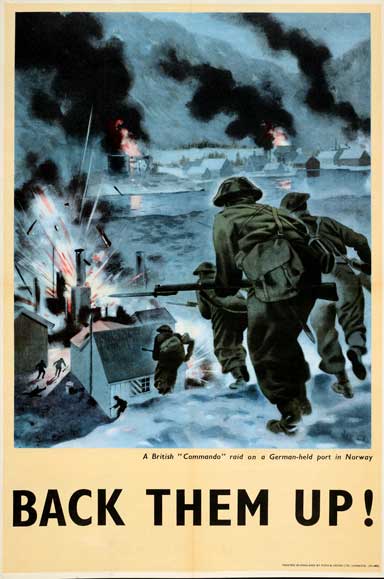
By 1942, the Allies had realised the advantage of having talented native speakers from German-occupied territories in their commando units. No 10 (Inter-Allied) Commando was the result. Each troop was formed of different nationalities – Belgian, Norwegian, French – and one troop, No 3 or X Troop, was ‘British.’ It was in fact formed of German-speaking, mostly Jewish refugees, many recruited from the Pioneer Corps. Their role was to fight behind enemy lines, in frontline commando operations, and to capture and interrogate Germans and collect intelligence from them.
X Troop was recruited and led by Captain Bryan Hilton-Jones, who was born in Harlech, Wales on 24 July 1918. He trained his new commandos in Wales, in Aberdyfi and in Harlech Castle. He was supported by his deputy, Lieutenant George Lane (in fact a Hungarian, born Lanyi Gyoergy on 18 January 1915, and married to an Englishwoman, Miriam Rothschild, from a prominent Jewish family). X Troopers were ordered to take ordinary British names to disguise their Jewish origin, to protect any family members still alive in German-held territory, and to keep the role of X Troop secret. They had accommodation addresses for ‘next of kin.’ They were also assigned normal Army regiments, with new service numbers, to hide their background.
The Dieppe Raid
Mystery surrounds the first action involving a few X Troopers in August 1942. Some historians argue that the ill-fated Dieppe raid was a cover to enable trained German-speaking commandos to try to steal secret documents and/or a new Enigma machine. Sadly, the overall raid went badly wrong, with heavy casualties.
Two of X Troop were captured: Private Charles John Rice (Karl Kutschaka), born on 4 or 5 February, 1914, assigned to the Royal Sussex Regiment, and Private (later Sergeant) Joseph Smith (Josef Kugler) born 13 January 1918, assigned to the Buffs (Royal East Kent Regiment). Both were anti-Nazis from German-speaking areas of Czechoslovakia. They had joined the Pioneer Corps, then the Special Operations Executive (SOE), before being picked for this raid. Both ended up as Prisoners of War (PoWs) in Stalag VIIIB Lamsdorf under their assumed names and regiments. The Germans never found their true identities. You can view their prisoner record cards in The National Archives’ catalogue, here and here respectively.
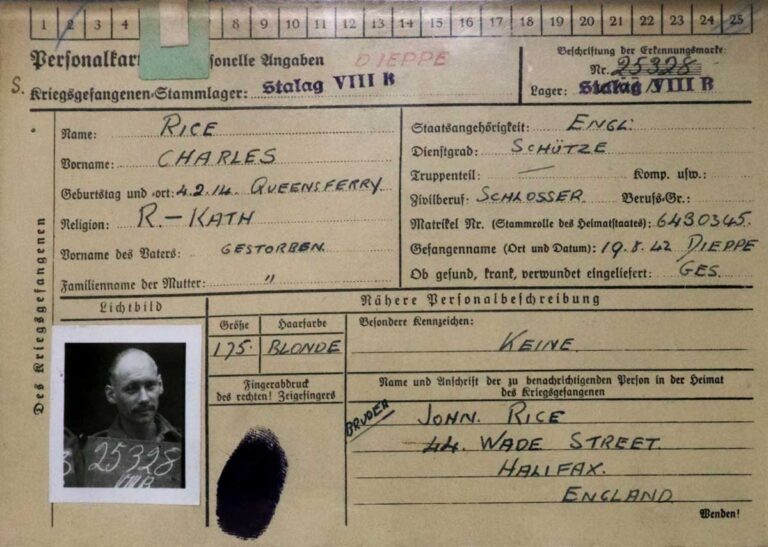
Both spent the rest of the war in PoW and work camps and survived the terrible German forced march westward in early 1945 (later called the Death March). Rice’s PoW liberation questionnaire can be found in WO 344/267/1 – he ended up in Nurnberg.
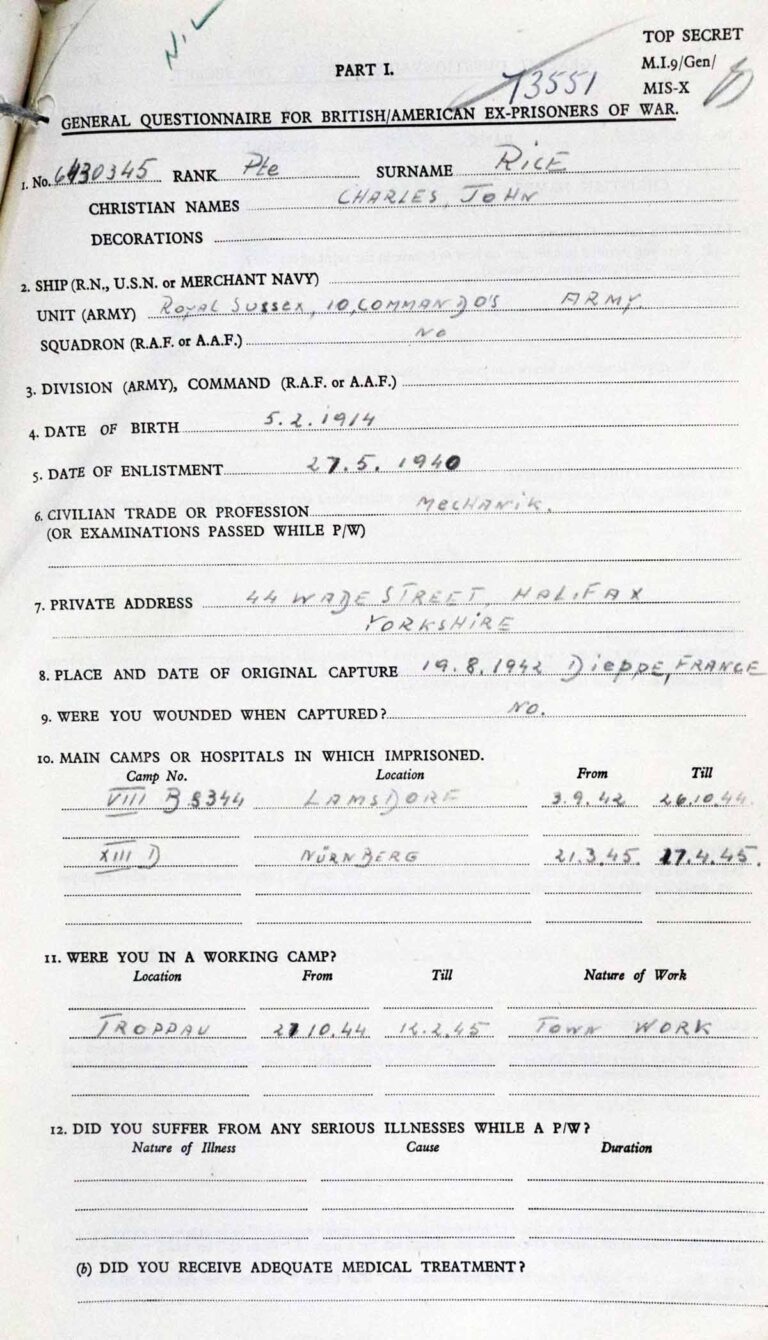
In his debriefing (WO 344/294/2), Joseph Smith used the same UK contact address as Rice. He also revealed that he had used another alias, Lance Corporal Kenneth Kickup, in order to join and escape from work parties in quarries or the railway. He had got out several times, once getting as far as the Swiss frontier, but never made it back to the UK until the end of the war.
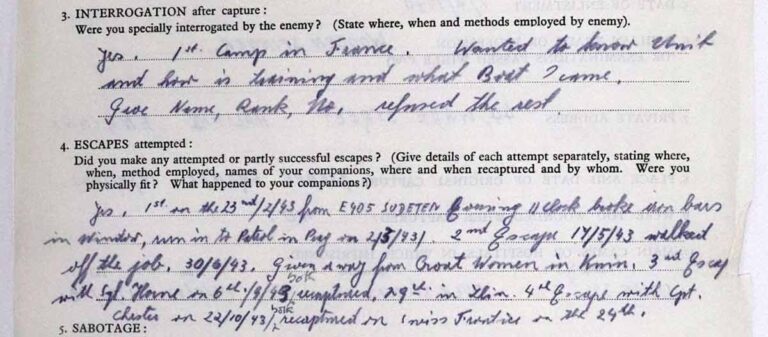
Further raids and D-Day
The Dieppe raid, despite its failures, had demonstrated the courage and effectiveness of X Troop, and they went on to serve with distinction in North Africa, Italy, France and Germany.
On one mission at the end of December 1943, Russian-born Vladimir Kottka, born 5 July 1911, operating under the alias Corporal Jack Jones of the Hampshire Regiment, was captured during raids on France and the Channel Islands.
On another, from 15–17 May 1944, Lieutenant George Lane was taking part in a dangerous recce of the French coast in advance of the D-Day Landings. He was with Captain Roy Wooldridge of the Royal Engineers, who had already been recommended for the Military Cross for his service in Egypt and Libya. Lane and Wooldridge were captured by the Germans and feared being tortured and shot. They claimed they’d been hit by a German boat in the Channel. Amazingly they were interrogated by Field Marshal Rommel, and they ended up as PoWs in Offizierlager IX A/H in Spangenberg. Lane was subsequently awarded the Military Cross.
As the Allies launched the D-Day landings on Normandy in June 1944, X Troopers were to play a key role. As with all their operations, many gave their lives, many were injured and very few were captured. However, one of those taken prisoner in Normandy was Lance Corporal, later Sergeant, Walter Gerard Thompson (Walter Gabriel Zadik), born 23/08/1919, assigned to the Hampshire Regiment. He was held in Stalag XIIA in Limburg.
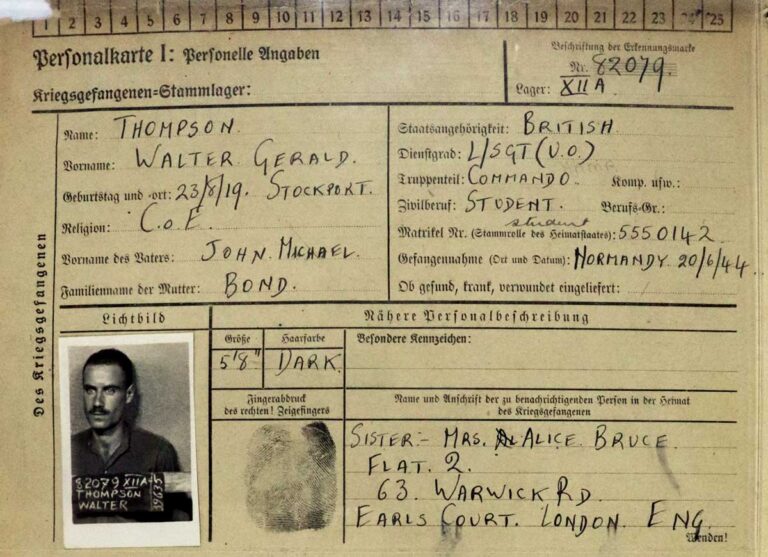
Also captured, although briefly, was Captain Hilton-Jones himself. By then he was second-in-command of No 10 (Inter-Allied) Commando, and a Major. He was badly injured during the fighting in Normandy and reported as missing, believed dead.
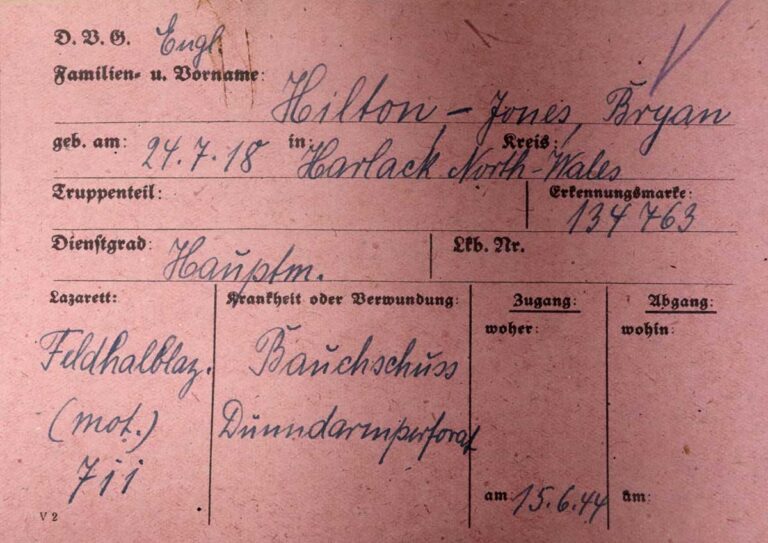
He was succeeded as leader of X Troop by Lieutenant James Griffith (Kurt Glaser), who was killed in April 1945, just before the end of the war, crossing the River Aller in Germany. Meanwhile Hilton-Jones’s life was saved in a German military hospital which was later recaptured by the Allies, and Hilton-Jones was found and sent back to England to continue his recovery. He was awarded the Military Cross. Unable to return to the front line, he devoted his time to his men: helping them apply for British naturalisation.
Highly trained, talented and brave, X Troopers served with distinction across World War Two. Nearly half of them were killed or wounded. Many were awarded honours, although probably fewer than they deserved, as they were often deployed in ones and twos to other units and their true names and identities were known only to a few. Their courage deserves to be remembered.
Liberation questionnaires: now online
Ancestry has just provided digital access to the PoW liberation questionnaires in WO 344 for the first time, making them searchable by name and much easier to access. As well as giving personal details like name, rank, number, unit and home address, these records can include:
- the date and place of capture
- main camps and hospitals in which imprisoned and work camps
- serious illnesses suffered while a prisoner and medical treatment received
- interrogation after capture
- escape attempts
- sabotage
- suspicion of collaboration by other Allied prisoners
- details of bad treatment by the enemy to themselves or others.
In addition, individuals were given the opportunity to bring to official notice any other matters, such as courageous acts by fellow prisoners or details of civilians who assisted them during escape and evasion activities.
The questionnaires relate to PoWs captured by both Germany and Japan. The online images and indexes exclude individuals born less than 100 years ago. To learn more about PoW records in general, please see our research guide, British and Commonwealth prisoners of the Second World War and the Korean War.
Find out more
Find out more about Second World War internment and POW records at our free exhibition Great Escapes: Remarkable Second World War Captives. Opening Friday 2 February 2024, Great Escapes explores the human spirit of hope and resilience during times of captivity, revealing both iconic and under-told stories of prisoners of war and civilian internees during the Second World War.
We’ve also scheduled a season of special events to accompany the exhibition that are available to book now.
Further reading
- Leah Garret, X Troop, The Secret Jewish Commandos of World War II, Chatto and Windus, 2021
- Helen Fry, German Schoolboy, British Commando, The History Press, 2010
- Peter Masters Striking Back: A Jewish Commando‘s War Against the Nazis, Presidio Press, 1997
- Ian Dear, Ten Commando 1942-45, Leo Cooper Ltd, 1987
- Hilary St George Saunders, The Green Beret: The Commandos at War, Landsborough, 1949
A very interesting post.
Although I was aware of X Troop – also known as 3 Troop, 10 Commando – in general and other German, Austrian and nationals serving in the British forces (notably the RAF as decoy Luftwaffe air controllers) during the Second World War this post adds more information.
Has anyone researched the contact address used by Smith and Rice to see if others members of the Troop used it and how it was used by the military – ie forwarding letters from family etc?
Katrina points out that the courage of these men deserves to be remembered.
There is at least one memorial to 3 Troop, 10 Commando at Penhelyg Park, Aberdyfi, Wales.
See https://ww1.wales/other-counties/merionethshire-memorials/aberdyfi-no-10-commando-memorial.
The latter webpage contains a list of those who were killed and the alias they served under, drawn from the book ‘Ten Commando’ by Ian Dear (and mentioned as further reading at the end of Katrina’s post). The list shows a ‘Private C Rice’ and a ‘Private J Smith ‘as killed at Dieppe.
Assuming that ‘C Rice’ is Charles Rice and J Smith is Joseph Smith, they can not have died at Dieppe and filled in the Liberated POW questionnaires!
There may be others to individual members of the Troop; for instance I believe that Eugen Kagerer-Stein is remembered on the Second World War plaque in St Mary’s Church, Balcombe, West Sussex.
Having served as Eugene Fuller and died of wounds, he is buried at Ranville War Cemetery where his grave is marked with a Christian cross.
If this appears strange – given that Eugen was an Austrian Jewish refugee, it should be noted that in order to complete their false identity many of these men claimed to be Christian in their Army paybook. In addition his widow (Cicely) may have been a Christian and so had his name added to the memorial.
In addition Imperial War Museums (IWM) has an oral history interview with Claus Leopold Octavio Ascher who served as Colin Edward Anson. See https://www.iwm.org.uk/collections/item/object/80011624 .
Colin also gave a speech about his wartime service and a transcript can be found at http://www.commandoveterans.org/book/export/html/986 .
The Virtual Jewish Library has an article and a list of those who served including those who survived the war.
Finally, does the inclusion of WO 344 in Ancestry now mean that the originals will no longer be available for public research at the National Archives?
I hope not!
Thank you Richard for writing in and for your interesting information. I do not know if others have researched the contact addresses given – it’s an interesting question. You raise an intriguing point with regard to Rice and Smith. My starting point was reading Leah Garrett’s book “X Troop”, when visiting Harlech Castle and learning that the men used the tune “Men of Harlech” as their anthem. I felt strongly that the amazing courage of these men should be better known. As you say, several accounts, including Garrett’s book, list Rice and Smith as missing in action at Dieppe. At the time, I was working as a volunteer on the cataloguing the record series WO 416. Following up the references to Charles Rice and Joseph Smith (pp71-2 and pp 309-310 in Garrett’s book) I found that the WO 416 record shows a Charles Rice and a Joseph Smith, both captured in Dieppe, held in German PoW camps and, as Garrett says, later debriefed. Smith’s handwritten debriefing on WO 344/294/2 contains some interesting misspellings including “doppel” for double and “special training scool”. Tracking down members of X Troop is not easy, given the use of aliases, new service numbers and new regiments. In the field they were often sent out in pairs to be attached to other units. It is perhaps not surprising that there does not seem to be a definitive list. The Jewish Virtual Library list has at least two other Smiths listed, so there is certainly room for confusion. Alas, I cannot resolve this mystery entirely – I am just a part time volunteer, not a historian, but I hope that notes are of interest.
The collection of WO 344 on Ancestry is not complete. Although most of the records have been digitised, questionnaires for those people born after 31 December 1921 have not yet been uploaded though Ancestry plan to add records for those born in 1922 and 1923 in early 2024. As such, access to the originals will continue to be available for research at Kew.
These brave men many of whom gave their all for us and our freedom deserve so much more recognition. Thank you for making their records available.
Additional information to my comments above. Eugen Kagerer-Stein is indeed remembered on the Second World War panel in St Mary’s church, Balcombe.
He appears to have been initially selected for SOE training in November 1941 and his personal training file is in the care of the National Archives (HS 9/1411/7).
Essentially a school report, it shows he was good in some aspects of his training (weapons handling) and poor in others (morse signalling where he ‘works hard but doesn’t make much headway’ and in another comment ‘is rather annoyed at his failure to keep up with the others at Morse, but is not taking any extra trouble to overcome this’.
It looks as if he found this and other aspects of SOE training overwhelming and was returned to his parent unit – 87 Pioneer Corps – in January 1942.
A note dated from a Major Godfrey appears to sum him up in the eyes of SOE. It states that they saw him as ‘A cheerful person who has shown great keenness but no outstanding ability’.
That description could fit so many that – as he did – went on to serve his adopted country well.
Hello Katrina and thank you for taking the time to comment on my observations on your excellent post and outlining the post’s background.
As you rightly point out – even leaving aside the question of false identities that had to withstand some degree of German scrutiny – clerical errors and typos abound in many Second World War records. After all, accurate record-keeping was not always possible or indeed a priority!
Given the fact that these men and others from similar backgrounds were deliberately given false identities, it no wonder it’s difficult to unravel the truth. And of course as we know historical records – even though inaccurate in the light of subsequent information – can’t be altered, only cross-referenced to others. This last point goes some way to explaining why a number of these men are buried in graves CWGC marked with their true name but a Christian cross rather than a Star of David.
As for solving mysteries – well, I find that as in this case the answers to one mystery lead to questions about another.
One final remark; please don’t think of yourself as ‘just a part time volunteer’. As I am sure your staff colleagues have told you we volunteers (I am one with another organisation) often have a wider although less deep subject knowledge and as such can sometimes make links between different areas that our staff colleagues can’t. In addition our efforts allow them to spend time on research.
Together, we are all working to increase interest and knowledge and in a small way keep memories alive.
Thank you for reply Roger.
I can appreciate the commercial and other pressures that can lead many government/semi-government organisations to putting records behind a paywall operated by a partner organisation.
However, it is also true that while these can be seen by potentially a wider audience, there are many who – for a variety of reasons – will not/can not use partner organisations or digital records .
Thankfully, there will be a few more months to view the WO 344.originals.
Hello Everyone,
my name is Sabrina and I am the great niece of Joseph Smith (Josef Kugler) and Charlie Rice (Karl Kutschka) was the husband of my great aunt (Joseph Smiths sister).
They both did not die, infact they got married. Joseph did not have any chidren but Charles did. How they managedto come back to the UK is still a mistery to me. I purchased the files of my uncle Joseph but nothing shows on how they did come back (Still working on that).
If someone should have more information to sharewith me about them, I would really appreciate it.
Best greetings
Sabrina
Regarding kagerer eugene stein cicely asked for a cross because of the persecution of Jews and even changed her last name to steen , despite her father was also a jew
Richard
One of your questions referred to the assumed addresses. I can say that these addresses were real, as were the families that lived there.
My grandfathers “pretend family” weren’t the same as Rice & Smith in the account above.
I’ll not say that he grew very close to the family, though he did form a bond of sorts with these people, who were some of the few who were in on the ruse. Somewhere abouts there is some correspondence between them, and I’m not sure if I’m imagining they remained on each others Christmas card list.
I’ll ask my father who will remember this much better.
Martin
It’s an interesting point.
My grandfather had a sense that the terrible persecution of Jewish people could return, and this, I sense, was one reason he didn’t maintain a Jewish heritage after the war (amongst other factors like he and his family weren’t strongly religious anyway). My niece has recently taken Austrian citizenship under the new laws that allow descendants of exiles to do so, and I sense this fear of their heritage being revealed has even affected my father. He talked about the danger of my niece having an official record that confirmed her lineage. And my father was born in 1952 in England!
I think it’s also true that not everyone feels strongly about all aspects of their heritage, and that actually many people wouldn’t really care if they were buried under a star or a cross. So it’s not just a case of a ‘directed motivation’, but also a case of lack of sufficient motivation. I think it’s easy to project onto others what we feel should be important, and just like many contemporary English people of Christian heritage wouldn’t think twice about the religious symbolism of their headstone, the same would be true of metropolitan German Jews too.
The ‘Further Reading’ list should include my long research list, drawn up with help from Ian Dear and Peter Masters, many years ago, of 3 Troop names and ‘nommes de guerre’ which I tried to attach here very recently updated, but is also on the Jewish Virtual Library as some commentators kindly, above, have pointed out.
https://www.jewishvirtuallibrary.org/jsource/ww2/Sugar13.pdf
My father was Steve Hudson. Page 76 Striking Back describes his fall while bouldering in Eryri (Snowdonia). Until I read the book I didn’t know of this incident. Neither my brother nor I have ever been climbers. I have lived in North Wales for 40 years and have walked in a lot of the areas where X Troop trained. Unfortunately my father died aged only 57 and only revisited North Wales once never telling us of his earlier experiences here. I still have a number of his army possessions.
I have recently researched the war service of one man on Martin Sugarman’s list: Meinhardt Katz, who became Michael Paul Heathcote as nom de guerre and naturalised to this name thereafter. He was my German teacher at school in the 1970s before his early death from cancer in 1978. He followed the route of internment, Pioneer Corps, and then Commando service.
Although I could see from the TNA archive that he had indeed trained with 1 Special Services Brigade (ie 10 Commando ) he was only posted to NW Europe in Aug 1945. I believe he was involved with denazification and at Nuremberg, but i’m not sure how or where to go further to establish this .